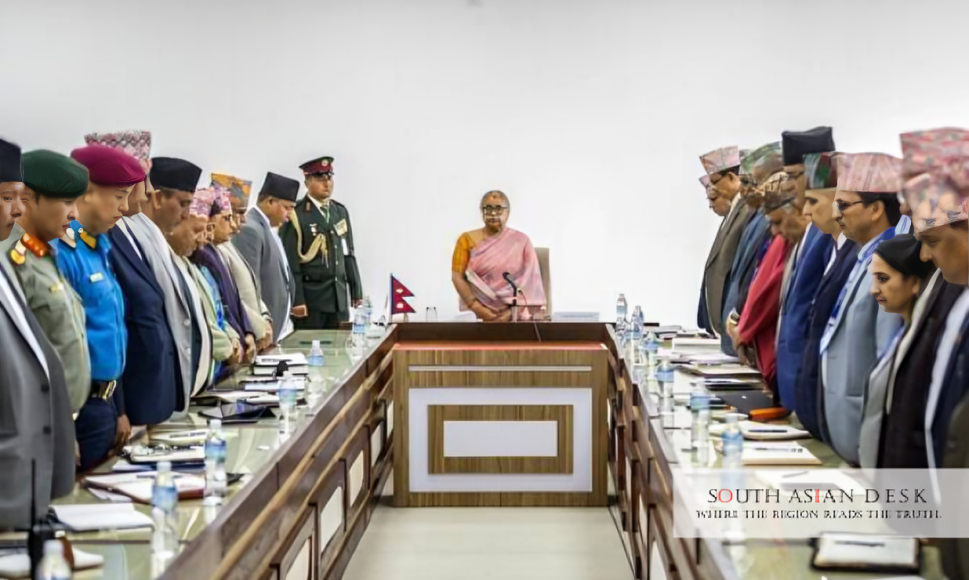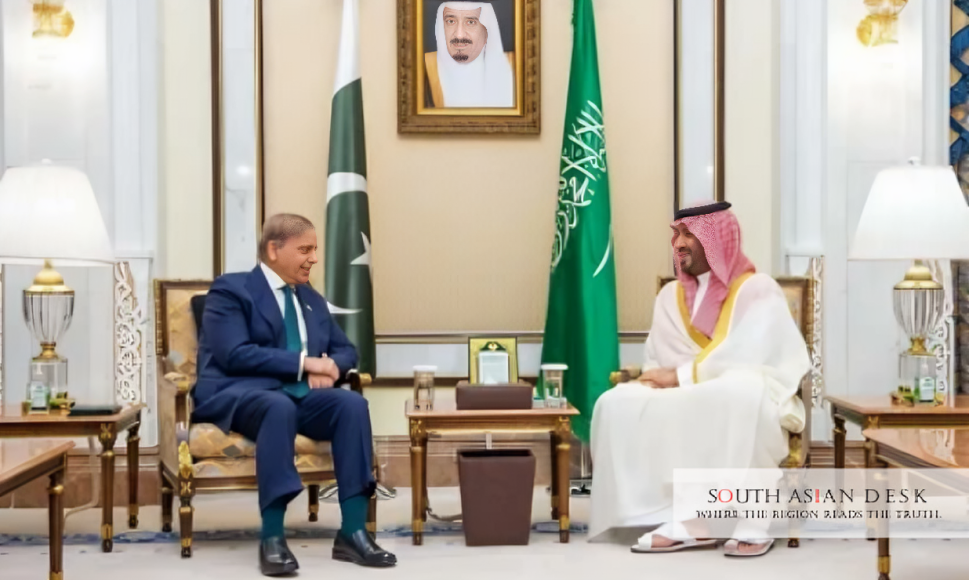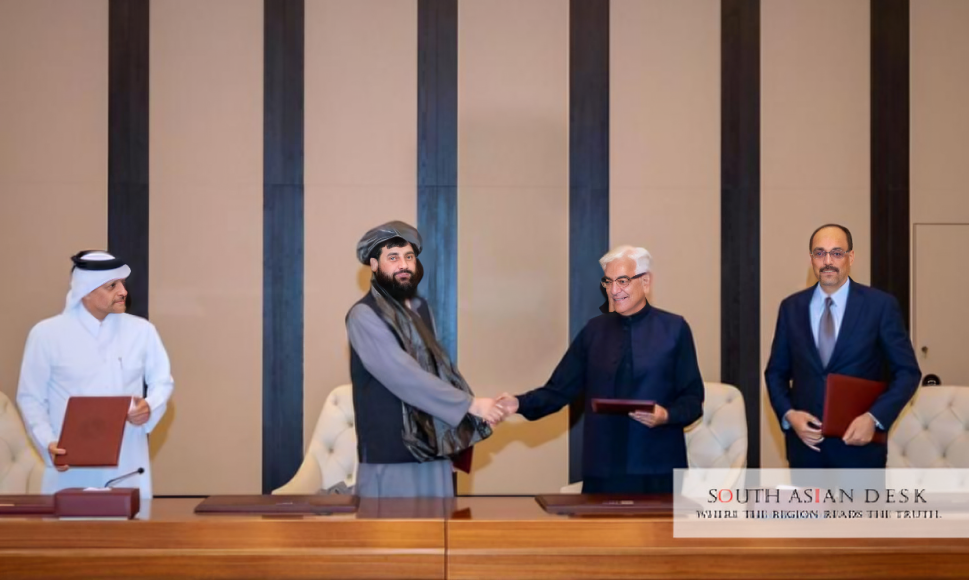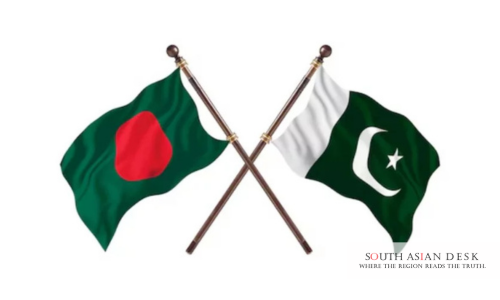Nepal two youth ministers’ interim cabinet expansion occurred on Monday, August 25, 2025, when Prime Minister Sushila Karki recommended their appointments to President Ram Chandra Paudel. Bablu Gupta and Sudha Gautam took oath in a ceremony at the Office of the President in Kathmandu. This move addresses youth demands amid political transition, with Gupta handling Youth and Sports and Gautam overseeing Health and Population. How will these additions shape Nepal’s interim governance?
The induction of Nepal two youth ministers’ interim cabinet underscores a deliberate effort to integrate fresh perspectives into Nepal’s fragile political framework. This development holds significance for South Asia, where youth unrest has rippled across borders, from student protests in Bangladesh to demands for reform in India and Pakistan. By elevating young leaders, Nepal signals a regional trend towards inclusive governance, potentially stabilising the Himalayan nation and influencing neighbouring dynamics on employment, health, and sports policies. Such steps could foster cross-border youth collaborations, easing tensions in a region prone to demographic pressures.
Sushila Karki Expands Cabinet Youth Figures in Key Move
Prime Minister Sushila Karki’s decision to expand the cabinet reflects ongoing negotiations with youth representatives following recent unrest. The interim government, formed to steer Nepal through elections, now includes these additions to broaden its base. Sushila Karki expands cabinet youth figures like Bablu Gupta and Sudha Gautam, who emerged as voices during the youth-led movements that prompted the current transitional setup.
The ceremony unfolded smoothly. President Paudel administered the oaths, a ritual that symbolises continuity in Nepal’s constitutional monarchy-turned-republic. Officials confirmed the event’s timing aligning with standard protocols for such inductions. This expansion brings the cabinet closer to full strength, though talks continue for further slots.
Data from government records indicate the interim cabinet previously comprised eight members. With these two, it reaches ten, enhancing representation across sectors. Nepal two youth ministers interim cabinet now features portfolios critical to national recovery, including health reforms post-pandemic and sports initiatives for economic diversification.
Bablu Gupta Sudha Gautam Oath Nepal Ceremony Highlights
The oath-taking process highlighted the ceremonial gravitas of Nepal’s executive transitions. Bablu Gupta, a social activist known for grassroots campaigns, pledged allegiance first. Sudha Gautam, a former health secretary with expertise in public policy, followed. Their induction as part of Bablu Gupta Sudha Gautam oath Nepal marks a milestone for millennial leaders in politics.
Witnesses described the atmosphere as charged with optimism. Security was tight around Shital Niwas, the presidential residence. Media coverage captured the ministers’ poised demeanour as they recited vows of loyalty to the constitution. This event, avoided midday heat, ensuring comfort for attendees.
Post-oath, the ministers met briefly with PM Karki. Discussions focused on immediate priorities, such as youth employment schemes under Gupta’s purview. Gautam’s role emphasises vaccination drives and maternal health, sectors strained by recent crises. Sushila Karki expands cabinet youth figures through such targeted appointments, blending experience with innovation.
Profiles of the New Ministers
Bablu Gupta, aged 32, hails from eastern Nepal. His activism includes organising forums on education access. As Youth and Sports Minister, he aims to revive national leagues. Gupta’s appointment addresses calls for sports funding, currently at NPR 2.5 billion annually, per budget documents.
Sudha Gautam, 35, brings administrative acumen from her secretary days. She spearheaded telemedicine projects during lockdowns. In her new Health and Population role, Gautam targets rural clinic upgrades. Her induction counters criticisms of bureaucratic inertia in healthcare delivery.
Together, these Nepal two youth ministers interim cabinet members represent a 20% youth quota push, aligning with UN Sustainable Development Goals. Their backgrounds, activism and bureaucracy complement Karki’s veteran leadership.
Significance of Youth Integration in Interim Setup
Nepal two youth ministers’ interim cabinet expansion carries weight beyond domestic politics. In South Asia, where over 60% of populations are under 30, such moves inspire similar reforms. India’s recent youth quotas in legislatures echo this, while Pakistan grapples with unemployment-driven protests.
Economically, Gupta’s portfolio could unlock tourism via adventure sports, a sector contributing 7% to GDP. Gautam’s health focus aligns with regional pacts like SAARC health initiatives, potentially aiding cross-border disease surveillance. Sushila Karki expands cabinet youth figures to signal responsiveness, crucial for investor confidence amid Nepal’s 4.2% growth forecast for 2025.
Critics note the interim nature limits long-term impact. Yet, these appointments foster dialogue with student unions, reducing strike risks. Data shows youth unemployment at 19.2%, per Nepal Labour Force Survey 2024. Addressing this could prevent escalations seen in 2023 protests.
The move also diversifies the cabinet’s gender and ethnic balance. Gautam adds to female representation, now at 30%. Gupta, from a marginalised community, enhances inclusivity. Bablu Gupta Sudha Gautam oath Nepal thus serves as a template for equitable governance.
Background: From Uprising to Interim Governance
Nepal’s political landscape shifted dramatically earlier this year. A youth-led uprising in March 2025 demanded electoral reforms, leading to the fall of the prior coalition. President Paudel dissolved parliament, paving the way for Sushila Karki’s interim administration in May.
This government operates under emergency powers, tasked with conducting polls by December 2025. Cabinet expansions like this one respond to stakeholder pressures. Previous additions in July focused on finance and defence; now, social sectors gain attention.
Historical precedents include 2015’s post-earthquake cabinet reshuffles, which integrated civil society. Similarly, Sushila Karki expands cabinet youth figures to build legitimacy. Archival records from the President’s Office detail over 50 such oaths since 2008, each marking stability phases.
The youth uprising involved 200,000 participants, per police estimates. Demands centred on anti-corruption and job creation, themes Gupta and Gautam championed. Their entry bridges protest streets to state halls.
What’s Next for Nepal’s Political Transition
Looking ahead, Nepal two youth ministers’ interim cabinet will face scrutiny in upcoming sessions. PM Karki plans further expansions, possibly adding four more by September. Elections loom, testing these ministers’ agendas.
Gupta eyes international partnerships, like Asian Games preparations. Gautam prioritises budget allocations, seeking NPR 50 billion for health infrastructure. Regional watchers anticipate ripple effects, with Bhutan and Maldives observing Nepal’s youth model.
Challenges persist: funding shortages and opposition boycotts. Success hinges on delivering tangible wins, such as sports scholarships or clinic openings. As Sushila Karki expands cabinet youth figures, the focus shifts to implementation, ensuring the interim phase yields lasting reforms.
In conclusion, Nepal two youth ministers interim cabinet induction revitalises governance, promising a youth-infused future for the nation.
Published in SouthAsianDesk, October 27th, 2025
Follow SouthAsianDesk on X, Instagram, and Facebook for insights on business and current affairs from across South Asia.






